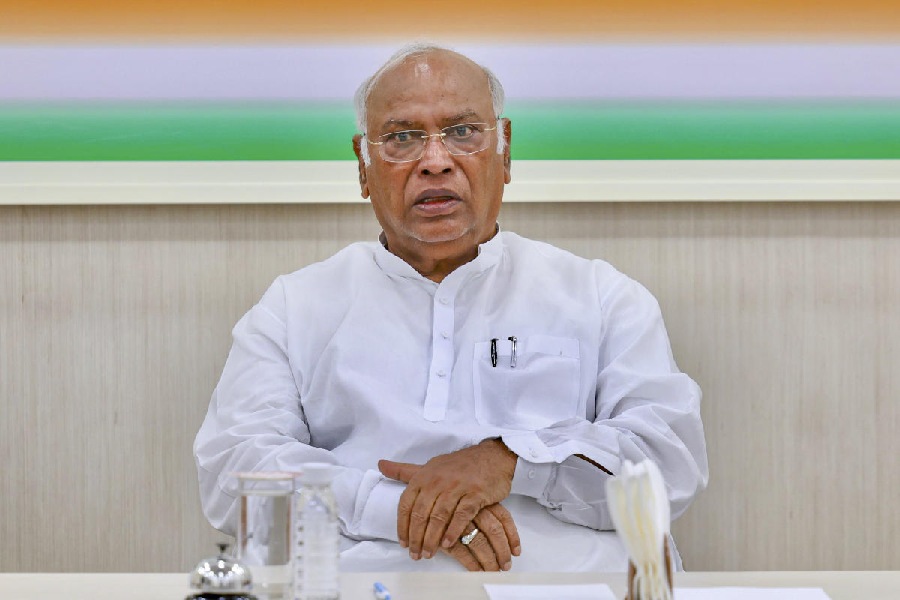Many of us experience pain and stiffness in different parts of the body because our circulatory system does not function efficiently. Long hours of work, bad posture, badly designed furniture and a lack of regular exercise aggravate this problem. These aches and pains are actually our body?s way of telling us that it needs some exercise. This is why painkillers provide only temporary relief. No cure takes place. To make matters worse, painkillers are habit-forming and have many harmful side-effects. Yogic practices, on the other hand, are guaranteed to give results, but do not offer instant solutions.
Today, we look at four asanas that help to significantly improve circulation of blood and pranic energy in the neck, shoulders, upper back and feet. Do them at home ? and at work, too.
 |
 |
Asana 1: Akarna Dhanurasana
If you have stiffness or pain in the neck, shoulder region and upper back, make this asana part of your daily practices. Don?t do it if you have a frozen shoulder problem. Take expert yogic advice.
Stand with the feet comfortably apart and arms at the sides. Take a short step forward with the right leg. Clench the right fist and raise the right arm slightly above forehead level, so that the right fist is directly above the right leg. Imagine that you are clenching a big, heavy bow (not Cupid?s but Arjun?s bow). Clench the left fist and bring it close to the right fist and imagine that you are holding an arrow, supporting it on the bow and pointing to an imaginary target (see picture). This is the starting position. Notice that the head is turned towards the target and you are looking up at it.
As you inhale, tense both the arms and start drawing back your left fist towards your left ear; tense the neck muscles. Feel the tension increasing in your neck and back muscles as the left fist goes towards the shoulder, hold this tension for a while and then release the arrow (and the tension) as you exhale. Notice the position of the left elbow in the picture after the arrow is fully drawn back. It must be at eye level. If you allow the elbow to go downward, then there will be very little effect on the neck and back.
Bring the left fist back again to the starting position and repeat this procedure four more times. Repeat the practice five times on the other side also.
 |
Asana 2: Dwikonasana
We hardly get a chance to exercise the deep muscles in our neck and shoulders. This causes, pain, stiffness and bad posture. The alternate tensing and relaxing of this practice helps to improve energy flow. It is a very useful practice for treating spondylitis, writer?s cramp and stiffness in the upper torso.
Stand comfortably with the feet apart. Take both arms behind the back. Interlock the fingers of both hands; lock the elbows. This is the starting position.
Easier version (if you have high BP, vertigo or slipped disc): Inhale as you stand upright, raise the arms behind the back as high as possible without causing discomfort and hold the position for a few seconds. Do not bend forward . Then, as you exhale, slowly lower the arms to the starting position. Repeat a few times. Feel the effects.
Tougher version: If you wish to do a deeper stretch, then, after you assume the starting position, bend forward at the hip as shown in the picture so that the upper body is parallel to the floor as shown. Then try the practice above. Repeat five times.
Now, let us focus on the feet. The two practices given below are useful for everyone. They help to improve the return flow of blood from the legs. This relieves the problems of tired legs and feet and cramps. The starting posture for asana 1 and 2 is the Prarambhik Sthiti, which is shown in the picture on the left.
 |
Asana 3: Goolf Chakra
Sit comfortably with the legs slightly apart.
Stage 1 : Slowly rotate the right foot, keeping the right heel anchored on the ground. Close your eyes, take your awareness to the ankle joint and imagine that you are drawing a big circle with the right toe. Repeat this 10 times slowly and then in the reverse direction 10 times more. Repeat with the left ankle 10 times.
Stage 2 : Slowly rotate both feet simultaneously in opposite directions, as shown, keeping the heels anchored on the ground. Close your eyes, take your awareness to the ankle joints and imagine that you are drawing two big circles with the big toes. Repeat this 10 times slowly and then in reverse 10 times more.
 |
Asana 4: Goolf Ghoornan
Bend the right leg at the knee and place it over the right thigh as shown. Grip the toes of the right foot with the left hand and slowly turn the foot around the ankle joint. To support this movement, use the right hand to hold on to the right shin bone. The movement in this practice is achieved by keeping the ankle joint completely relaxed and using the left hand to rotate the foot. Try to become aware of the movements going on inside the ankle joint. Do 10 rotations clockwise and 10 anti-clockwise.
Apart from the above yogic practices, we can bring about considerable changes in the way we feel by doing some or all the following things :
a) Going for morning or evening walks and being with Mother Nature.
b) Walking up the stairs instead of taking the lift.
c) Getting off the car two stops away from home or work, and walking the remaining distance.
d) Using TV commercial breaks to get up and str-r-r-r-etch.










